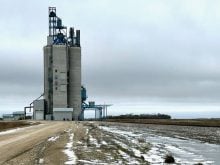The idea of building a dam on the South Saskatchewan River to solve
water shortages in Saskatchewan and Alberta has been shelved because it
would cost “substantially” more than any benefits it would provide,
said a preliminary study released March 11.
The study outlined three scenarios for construction of a dam and
irrigation development that ranged from $3.6-$5.5 billion.
The preliminary feasibility study commissioned by Alberta Environment
and Sask Water showed that every dollar spent on development would
Read Also

Farmland ownership fires up Saskatchewan politicians
Saskatchewan politicians debate the enforcement of farmland ownership laws in the province.
return 33 to 35 cents.
“The project is not economically viable, before even considering the
possible environmental impact,” said Ron Osika, minister responsible
for Sask Water.
Most of the money for the project would be spent on a pumped irrigation
system to blocks of land that are at a significantly higher elevation
than the water reservoir.
The study also took into consideration the loss of oil and gas revenue
from wells that would have to be abandoned if the dam were built.
The concept of a meridian dam on the border of the two provinces has
been discussed since the 1920s. Last year the two governments
commissioned a study to help determine if a dam is a viable option to
resolve water shortages in the southern parts of the two provinces.
Alberta environment minister Lorne Taylor said the information from the
study would be used to look at alternative solutions for managing the
area’s water supplies.
The study cost $100,000 and the cost was shared by both governments.














